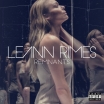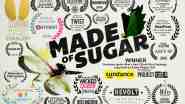The Center Accuses Journalist of Disparaging Trans Community
- September 1, 2017 - 12:00am
- Comments
Las Vegas Review-Journal columnist Victor Joecks has been accused of disparaging the transgender community as a result of an article published in the newspaper in early July.
André C. Wade, executive director of the Gay and Lesbian Community Center of Southern Nevada (The Center) is leading the charges against Joecks and the Review-Journal penned a response that has been published in the paper.
In a July 11 press release, The Center accused Joecks’ article, titled “Transgender debate about stopping left’s attempts to redefine reality” and published July 6, of having “disparaged the transgender community and made many false claims.”
The Center and other readers took issue with such lines as Joecks’ declaration that the fight for trans rights is a debate “as to whether feelings should be treated the same and even elevated above scientific realities” and that “the conflict has come because the left is demanding that society treat someone’s gender identity — aka their feelings — as being on par with the scientific and objective reality of gender.”
Rebutted Wade: “Unbeknownst to Mr. Joecks, we already demand that society treat someone’s gender identity as our ‘objective reality of gender.’”
“Over the past decades we’ve learned more and more about the difference between biological sex and gender, which is one of the fundamental pieces of information that helps to shape the discussion,” continued Wade. “In basic form, sex is the anatomy of one’s reproductive systems, whereas gender is based upon one’s concept of themselves or their role in society. For a small percentage of people, the biological sex they were assigned at birth does not match their gender identity.”
“When a news outlet makes statements of that in Mr. Joecks column, it does nothing but continue the cycles of misunderstanding and fear of the unknown in our community,” said Joseph Oddo, Jr., vice president of The Center’s board of directors. “Now is not the time to create a rhetoric that embodies intolerance, we are persistent in pushing forward because the LGBTQ community is intolerant of intolerance.”
Wade’s open letter to Joecks and the paper was published in the Review-Journal on July 15, but according to The Center’s press release, it “went unanswered.”
The press release finishes: “Mr. Joecks, if you are reading this, we invite you to join us to, as André Wade stated in his letter ‘join me and a few transgender identified people to engage in a meaningful dialogue about the needs of their community’”.
TLC Interview
- September 1, 2017 - 12:00am
- Comments
TLC never had to go chasing their gay fans – we came to them. And not just because “Waterfalls,” one of pop history’s most prominent HIV/AIDS-awareness anthems, made a generation of LGBT people more sexually responsible, or because “Unpretty” affirmed you’re fine just the way you are. Ever since their debut dropped in 1992, the self-proclaimed “prissy tomboys” – nobody could wear condoms quite like Lisa “Left Eye” Lopes, Tionne “T-Boz” Watkins and Rozonda “Chilli” Thomas – led us all to embrace our own crazy, sexy, cool selves, gender norms be damned.
But when Lopes, the trio’s swagging rapper, was killed in a car accident in 2002, T-Boz, 47, and Chilli, 46, took a long break from the recording studio to tour and pursue solo ventures. Now, 15 years post TLC3D, and thanks to a Kickstarter that funded the project, one of pop music’s flyest girl groups is taking their final bow with their self-titled fifth studio album TLC and opening up to their gay fans.
And no, they didn’t just stick to the rivers and lakes they’re used to. During our nostalgic and, ahem, educational interview, TLC talked about how “No Scrubs” gets the queers “crunk”... and, you know, just casually reminisced on that time they got schooled on what it means to be a top and a bottom.
Have you ever been to a gay club when “No Scrubs” comes on? Because you’ve never seen anything gayer or more inspiring.
T-Boz and Chilli: (Laughs)
Chilli: You know what’s funny? One of my friends works for VH1 and, oh my gosh, it’s hilarious. He’s gay and I’m the only girl who could be his play girlfriend he tells me, and he always sends me – and, I mean, he just sent one the other day – video of when “No Scrubs” comes on, and he’s like, “Chilli, I love you!” And he’s singing and showing me everybody singing. It is crunk!
So, I take it you’re aware of your LGBT following?
T-Boz: Oh, very aware. Very, very, very! The thing I love about our fans is, we’ve grown with them and they’ve grown with us. Some of them have kids now, so we have generations there. But, yes, we are very, very, very aware of the community, honey, ’cause all of our friends let us know. I love it!
When did you first know you had a gay following?
T-Boz: I did a party around (1994’s) CrazySexyCool and that was one of the best parties I hosted. I learned so much! Like, I didn’t know there were certain terms and stuff! They hooked me up with a lot more knowledge of stuff that went on than I really realized. I was like, “Ohh?!” It was just such a free, fun party. No judging. No anything. It was just one of the best environments I had ever been in, so I thought that was cool. So, probably around ’95-ish when I was really aware.
What did you learn about the gay community that night?
T-Boz: I learned what a top was, a bottom was. And versatile! (Laughs) I learned all of those terms! I was like, “Oh my god – this is so cool.”
Chilli: Oh, Lord. Oh, Jesus. I wasn’t at that party!
Sounds like you really missed out, Chilli. When was your gay awakening then? Ha!
Chilli: (Laughs) I don’t know why I feel weird saying it now, ’cause you already said it! The bottom part. And you know… the top. I keep laughing!
Ha! Moving on to the new album: Which songs on it do you hope become gay club anthems?
Chilli: It’s funny that you kind of break it down like that. But really and truly, for me personally, I just kind of feel like when we make our songs, we make them for everybody. I mean, everybody. So, you never know who’s gonna like what the most. I guess we’ll find out in time by what song really speaks to whomever and what’s the most popular one that’s being played at certain clubs. It’s kind of harder to gauge that one for me.
T-Boz: I think “Perfect Girls.” The three I’ve heard mostly from my gay friends have been “Perfect Girls,” “Scandalous” and “Start a Fire.” Those are the top three. But I think “Perfect Girls” has a message that’s been universal no matter what sex you are – anyone who’s ever felt like they don’t love themselves from the inside out or have a goal they’re trying to reach but can’t ’cause they’re looking at people who they think are perfect. But there’s no such thing!
What do you remember of the LGBT community’s response to “Waterfalls” when it first came out?
T-Boz: We did a campaign for Pfizer, and there was a new cocktail out. We did seminars and it was really cool because we let it be known that there was a new drug from this company and it could help HIV/AIDS patients. They would come up to us; they felt like we were their voice. It was such an epidemic at the time, so they just felt like we were speaking for them.
Chilli: It was basically about bringing more awareness (to it) because nobody really talked about it. It was kind of just hush-hush, even though these things were happening. It was like, “People are getting sick, they’re dying and nobody is really talking about it much.”
T-Boz: People even said they thought about committing suicide and it helped save their lives. We started really seeing the seriousness of it, especially when we did charity events. We got a lot of calls for charity events for AIDS benefits, so it started making a really big difference. We basically got one of our wishes through that song, because we always wanted to help change and save lives.
Gay icon Bette Midler covered “Waterfalls” a few years ago – what was it like hearing her rendition?
Chilli: That was an honor. It was an honor because she is legend, oh my god. That’s legendary right there! And not only that, but she contributed to our Kickstarter campaign. We were shocked. We couldn’t believe, like, ‘Bette Midler?!’
During RuPaul’s Drag Race, Tatianna showed some TLC love when she did T-Boz drag. Did you tune in for that?
T-Boz: (Laughs) I absolutely saw it and I loved it! I put it on my page; I reposted it.
Chilli: I don’t think anybody ever has (dressed up as me). Maybe I’m boring! I’m no fun, I guess. (Laughs) I just got the long, wavy hair. And I don’t hardly wear any makeup, so I don’t think I’d be a fun person to dress up as, is what I’m thinking.
T-Boz: Yeah, I’ve seen T-Boz drag more than once, actually. It’s cool to see different renditions of myself. It makes you go, “Oh, that’s how you see me!” (Laughs)
What do you remember from RuPaul’s visit to the set of the “No Scrubs” video in 1999?
Chilli: I remember the first time I saw him – and at first I didn’t know even it was him because he wasn’t in drag! He was just walking around with no makeup and it was so funny. But then, when he smiled, it was like, “Oh, that is RuPaul.” You know that smile anywhere. And he was so sweet too. And really tall! (Laughs)
T-Boz: He just came to show love. He was just there to support us, which I thought was awesome. That was it. He was just showing love.
At the start of your career, you rocked a tomboy look. How intentional was your subversion of gender? And what did that do for your lesbian following?
Chilli: This is how we looked at it: We call ourselves “prissy tomboys” ’cause we’re super girly, but we’re tomboys at the same time, so we felt like we represented all the girls who did not feel comfortable wearing a tight dress. We represented that crew. Then lettin’ everybody know you don’t have to wear a tight dress to be sexy – it’s the attitude. So, even though we had baggy clothes and all that kind of stuff, we were still feminine, So, again, whoever gravitated toward that and felt comfortable, we helped them feel more comfortable. That’s how it was, because we didn’t wanna wear tight dresses! We still don’t really like dressing like that.
Did your style give the ladies the wrong idea – that you were lesbian? What do you remember of those rumors?
T-Boz: I got most of it! They was always after me, child! (Laughs) All the lipstick lesbians – everybody! Child, I got everything. But that doesn’t bother us. Ultimately, no matter what your sexual orientation, we were standing up for anybody that felt like they didn’t fit in. We were letting them know you can still be sexy in boy clothes, you can rock this, you don’t have to be naked or half-dressed. You can be yourself and be just as fly.
Sunday Funday Fashion
- September 1, 2017 - 12:00am
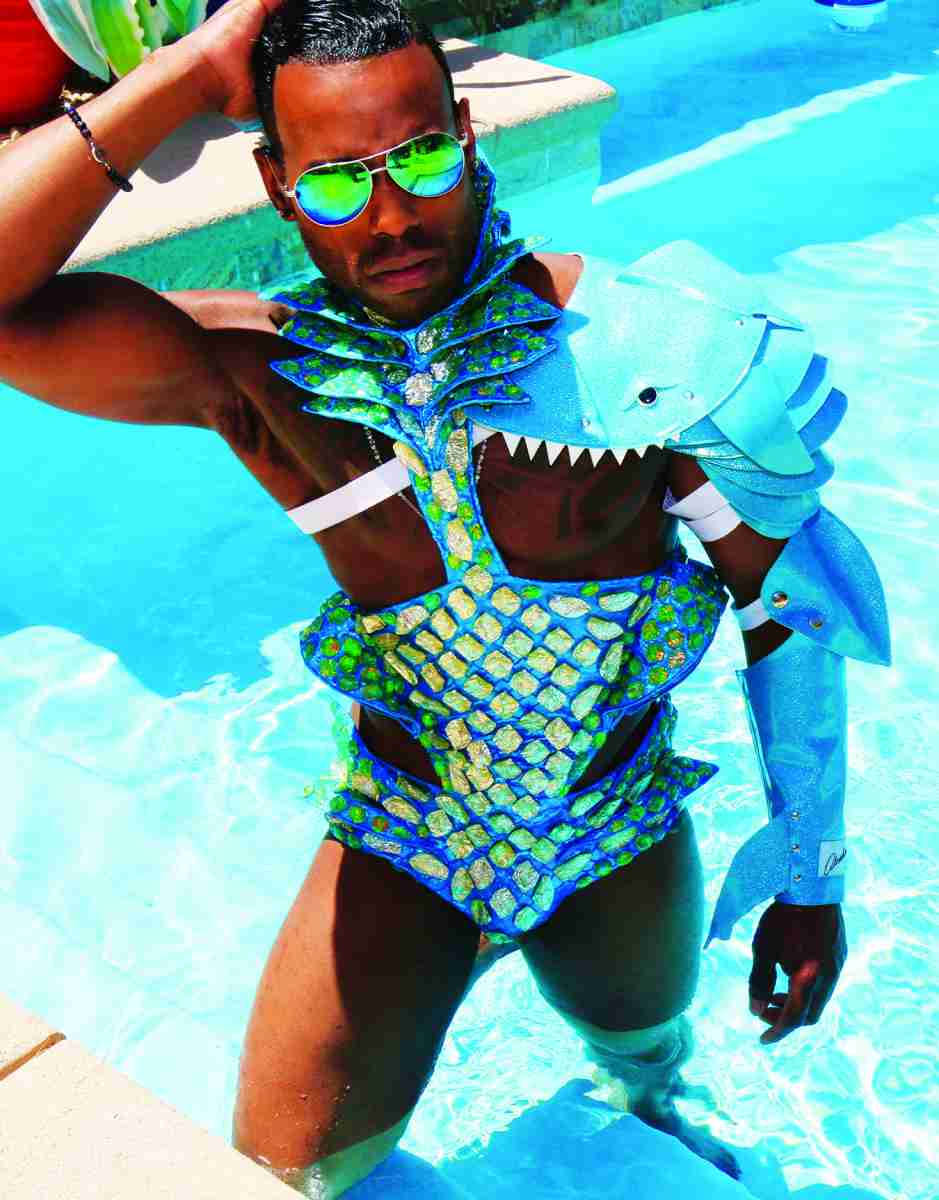 ABRAHAM DAVID LEVY Instagram: @AbrahamDLevy Shark-Suit and Pauldron; ALDO Laureana sunglasses ($20);
ABRAHAM DAVID LEVY Instagram: @AbrahamDLevy Shark-Suit and Pauldron; ALDO Laureana sunglasses ($20);
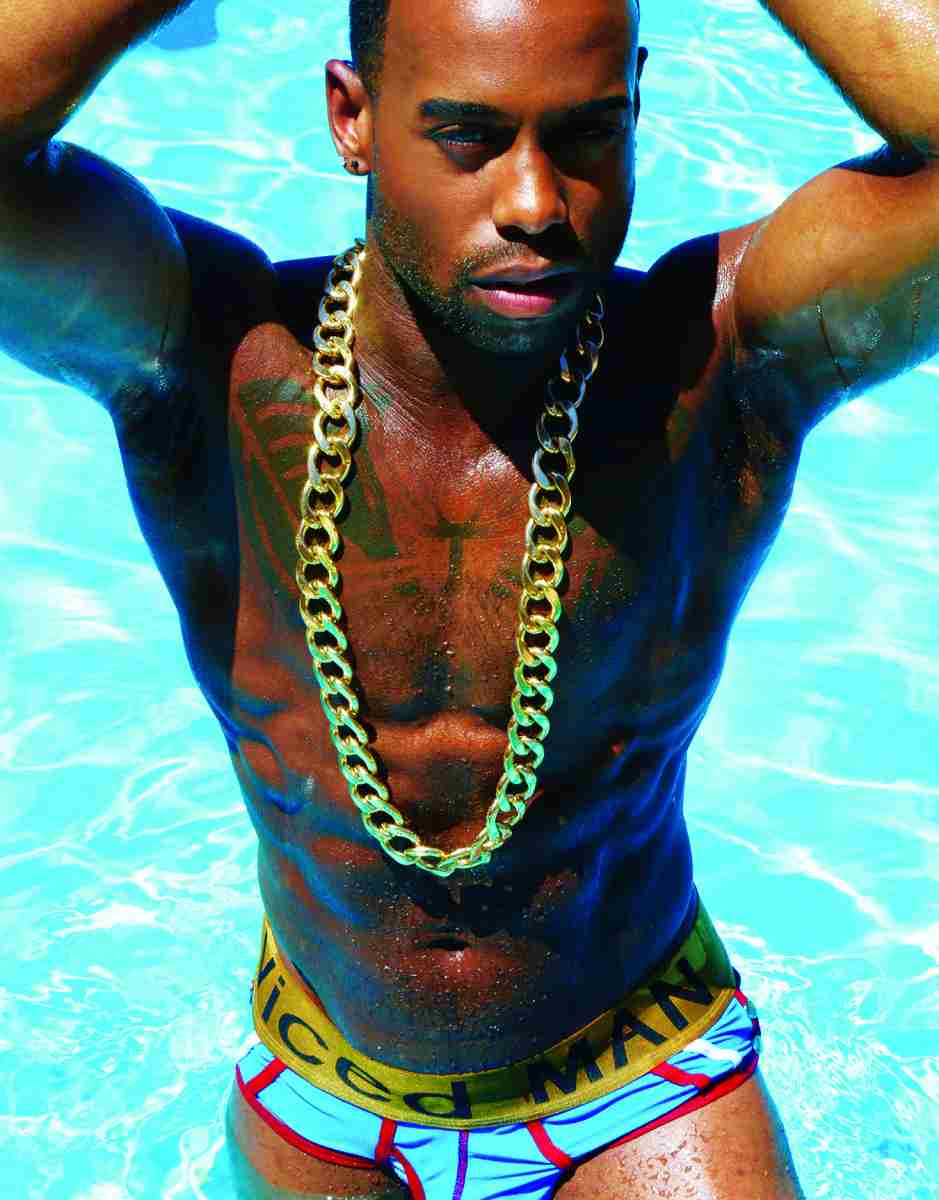 VICED MAN Sexy Tempation underwear ($28); ALDO Dauzat necklace ($18);
VICED MAN Sexy Tempation underwear ($28); ALDO Dauzat necklace ($18);
Ryan Adams, LeAnn Rimes
- June 16, 2017 - 1:23am
- Comments
Ryan Adams, Prisoner
Ryan Adams, known in part for making Taylor Swift cooler to pop-resistant granola girls (he recorded, in full, a beautiful version of her Grammy-winning 1989 behemoth), is back to his old tricks on Prisoner. As usual, the beloved feelings guy dives deep into his torn psyche for rockers doused in punchy guitars rhythms from his favorite decade, the 80s, and the heartbreak brought on by his divorce to former pop star-turned-adored TV actress Mandy Moore. The guitars on “Do You Still Love Me?” scorch like heaven on fire as they tear through the track with impassioned verve, making for one helluva start to your late-night drive playlist. Those guitars simmer on “Breakdown,” and beam on “Anything I Say to You Now.” If you asked Adams what his favorite adult toy is, he’d say the guitar. Prisoner, then, is his playground. For that reason, Adams delivers a melodically on-point work more rousing than anything he’s recorded in years – yes, my dear Swifties, even more so than his surprising take on the pop singer’s blockbuster album. One of Adams’ originals, the forlorn “Shiver and Shake,” is a sonic extension of the lo-fi vibe heard on his 1989 reimagining; in fact, it sounds almost identical to his living-room rendition of “Shake It Off.” Too much of a good thing is just fine, though, especially since Adams gives these ditties new life, even those that fall right within his emo-rock wheelhouse where the only confrontation he’s having – nevermind that Mandy person, he seems to say – is the one involving his own shattered self. Grade: B+
LeAnn Rimes, Remnants
I once saw LeAnn Rimes at a casino even though LeAnn Rimes is too young to be playing casinos. That’s where artists go when a) the performer is blasé about the energy of the “we’re just here to use our comp ticket” crowd, or b) the performer is an AARP member. Rimes is 34 years old, just a year older than Carrie Underwood, who sells out arenas. If there was any justice in the world, Rimes would receive as much acknowledgement for Remnants, her 13th studio album, as she does in the tabloids. Still, niche success has been good to Rimes, who, once again, goes her own way because she can – no fickle masses, no big label heads. The opener misses the mark – she delivers a too-slick cover of out singer-songwriter Brandi Carlile’s guttural “The Story” – but otherwise, Remnants is an accomplished set that fortunately finds Rimes answering to no one except her own artistic instincts. Highlights include grungy jazz-inflected banger “Dang Dang” and smoky torch number “Dangerous Love,” a fired-up ballad about outsider relationships soon to be heard at all your queer weddings. More transparently gay is the buoyant pop song “Love Is Love Is Love,” the Ally for Equality honoree’s anti-hate anthem, which also serves as a call to “start a revolution.” You know, maybe we can’t fight the moonlight, but that’s only because Rimes, armed with an album’s worth of strong-willed mantras and an ode to equality, is too busy fighting more important fights. Grade: B
Also Out
Reba McEntire, Sing It Now: Songs of Faith & Hope
Reba McEntire, country music’s biggest gay icon this side of Queen Dolly, must know you’re trying your damndest to keep it together as this fragile world falls to pieces in the grabbing hands of a reality-show star currently serving as the President of the United States: She’s just offered your dying soul 20 God-centric songs meant to restore your faith in… everything. Sing It Now: Songs of Faith & Hope is touted as a mix of “uplifting covers and originals,” with her take on the churchy “Oh Happy Day” that, given the current political hell we’re experiencing, might be her most ironic work, and the sweet-if-silly “God and My Girlfriends,” which, depending on her definition of “girlfriend,” could be the cheesy gay anthem 2017-2021 needs.
Vanessa Carlton, Liberman Live
If you’re too busy protesting to catch Vanessa Carlton at a venue near you – she’s touring in support of her remarkable Liberman album, released in 2015 – then, resisters, you’re in luck. Liberman Live might just be what your restless mind is craving after a long day of Trumpisms, “fake news” and protest marching. Famous for providing the drunken sing-along for you and your trashed friends, “A Thousand Miles,” Carlton has made quite a name for herself in the underground world where pop stars go when they’re done being pop stars. If only the noteworthy dreamscapes on Liberman Live had the same spectacular reach.
LGBT sports movement faces growing pains
- June 16, 2017 - 1:12am
- Comments
Once upon a time, there was no such thing as LGBT sports. No one imagined gay men could be athletes. Besides, weren’t all female athletes lesbians? Or so the stereotypes went.
Then came Dave Kopay, Greg Louganis. The growth of women’s sports. With a rush, LGBT sports roared out of the locker room.
The next step was to gather LGBT athletes together. Outsports created a superb online community. In real time there were running clubs, gay sports teams, even entire leagues.
All of that happened organically. But, as with all growing movements, formal organizations emerge to advocate, educate and show a cohesive face to the world.
Up they sprang: the You Can Play Project. Changing the Game. Br{ache the Silence. Athlete Ally.
Several years ago, Outsports founder Cyd Zeigler wanted to unify all the groups and individuals working in the LGBT sports space. With longtime activists Pat Griffin and Helen Carroll, they organized a summit meeting. Nike offered space and sponsorship dollars.
The first meeting was wildly successful. A diverse group brought enormous energy and great ideas to Portland. They concluded a weekend filled with discussions and social events by marching in the city’s gay pride parade.
“The whole idea was collaboration,” Griffin recalls. “Instead of competing head to head for funding and publicity, we wanted to pull individuals and organizations together.” Nike was happy for the help; they needed a way to allocate their funding. The LGBT Sports Coalition would be it.
The new group’s emphasis on collaboration was important. All projects submitted through them for Nike funding had to involve more than one group. One of the most important efforts was Common Ground, bringing together LGBT sports educators and administrators with members of the faith community.
Other groups tackled transgender issues through state high school athletic associations. Campus Pride took the lead in working with historically black colleges and universities.
Annual Coalition meetings in Portland were energizing, exciting and fun. Relationships between member organizations and individuals grew. Young attendees found inspiration. Mentorships formed.
However, the LGBT Sports Coalition lacked 501(c)(3) status. Money was funneled through the Ben Cohen StandUp Foundation. Nike pushed for the Coalition to have its own standalone non-profit status.
At the same time, Nike was going through an internal review of its funding processes, channeling some resources elsewhere.
There were other tensions at the LGBT Sports Foundation (the Coalitions’ new name). One involved the role of straight allies in LGBT sports. There were raw discussions regarding the role of Athlete Ally, with Coalition members taking both sides of the debate.
Another division emerged around the issue of diversity. Voices asked for greater numbers – and power – for people of color, women and transgender people. Leaders invited members of those groups to join.
Some white men applauded the move. Some felt attacked. An ugly split ensued.
“Treating intersectionality as part of a coalition is how to get things done,” Griffin says. “I understand that other people might have a very different view.”
Yet another fissure appeared. Some Foundation members believed that the most effective way to achieve change is for all LGBT people in sports to come out. Others felt that – while coming out is important – it could not be the only approach.
“I think we need advocacy, education and policy change,” Griffin says. She prefers a holistic approach involving straight coaches and administrators, including seminars, policy manuals and other efforts.
Several members left the LGBT Sports Foundation. Griffin and Jeff Sheng – creator of the “Fearless” photographic project, and a leading voice for intersectionality – shored up the organization. They spent months getting 501(c)(3) status.
Now the Foundation is at a turning point. “We’re still very committed to this,” Griffin says. “But we want someone else to step up and take over.”
So far, no one has. “I understand it’s hard,” says the author and University of Massachusetts professor emerita of social justice “People have jobs and lives. They’re committed to other advocacy groups.”
What does all this say about the current state of the LGBT sports movement?
“It’s strong, in the sense that members of the Coalition do amazing work, in organizations like the NCAA and National Center for Lesbian Rights. They’re just doing it outside the Coalition,” Griffin says. “But it’s sad because we could do so much more if we got our act together. All we need is someone to take charge.”
Every movement has growing pains. The LGBT sports movement is still growing. It encompasses many viewpoints, and with visibility comes diversity.
“We’re all still passionate,” Griffin notes. “We may have our philosophical differences, but we all still work for what we believe in.”
She ends the interview. It’s time for her and Chris Mosier – trans athlete and Foundation member – to lead another workshop.
MAGIC MIKE LIVE LAS VEGAS CELEBRATES OPENING NIGHT WITH A STAR-STUDDED PERFORMANCE AT HARD ROCK HOTEL & CASINO
- June 15, 2017 - 3:18am
Last night, Las Vegas’ most buzzed-about new production MAGIC MIKE LIVE celebrated its opening night at Hard Rock Hotel & Casino with a star-studded performance in its custom designed showroom, Club Domina. The show, based on the hit films Magic Mike and Magic Mike XXL and conceived and co-directed by Channing Tatum, brought audiences to its feet on the first night of its open-ended run in Las Vegas.
Following the show, the cast and creative team returned to the stage for an encore performance of Fatman Scoop’s “Be Faithful,” joined by the show’s co-director and producer Channing Tatum and wife, Jenna Dewan-Tatum. Tatum then shared a few words with the packed venue, thanking the crowd and friends and family in attendance for joining the cast and creative team for their highly-anticipated opening night performance.
After the performance, guests were invited to partake in a poolside celebration at Hard Rock Hotel’s Dish Pool. Guests enjoyed light bites and libations atop plush daybeds positioned beneath canopied palm trees, as well as special activations presented by LELO – the world’s leading pleasure brand – featuring a “touch and play” area, VIP gift bags stuffed with the most desired pleasure objects and more.
The opening-night cast featured performers Anton Engel, Brandon Foster, Chelsea Phillips-Reid, David Terry, Jackson Williams, JD Rainey, Jeremy Denzel, Jesse Morales, Kyo Dominick, Liinda Garisto, Luke Broadlick, Lyndsay Hailey, Manwé Sauls-Addison, Ryan Carlson, Ryan Pires and Sebastian Gonzalez. MAGIC MIKE LIVE LAS VEGAS performs Wednesdays through Sundays at 7:30 pm and 10:00 pm. Ticket prices start at $49 and are available by phone at 800-745-3000, or online at Ticketmaster.com or MagicMikeLiveLasVegas.com. A $45 VIP Meet & Greet add-on is available with any ticket purchase and includes a meet and greet with the cast and a souvenir photo. For groups of 10 or more, please call 866-633-0195 or email Sales@BASEentertainment.com.
For tickets or more information on MAGIC MIKE LIVE, please visit MagicMikeLiveLasVegas.com.
Booty and the Beach Club
- June 15, 2017 - 12:00am
- Comments
Shake what your mama gave you in a kaleidoscope of prints and patterns eager to get soaking wet.
Step into any Vegas pool party – from Drai’s Beach Club at The Cromwell to Rehab at the Hard Rock – and you’ll bear witness to a veritable fashion show of loosey-goosey board shorts, fitted trunks, and skintight Speedo-like swimwear. While anything goes during Vegas season – this year’s styles continue last year’s thighs-the-limit trend with a twist: Button-closure shorts with waist-specific sizing. Here we cultivate some of the more stimulating designs for 2017 with a smattering of tradition for good measure.

The King of the Jungles
You won’t have to cast a wide net to bring all the bottoms to your VIP cabana in Original Penguin’s lion photo-print snap-togethers that are anything but cowardly. Mesh briefs on the inside help keep your animal in its cage. $79, originalpenguin.com also available at Nordstroms.
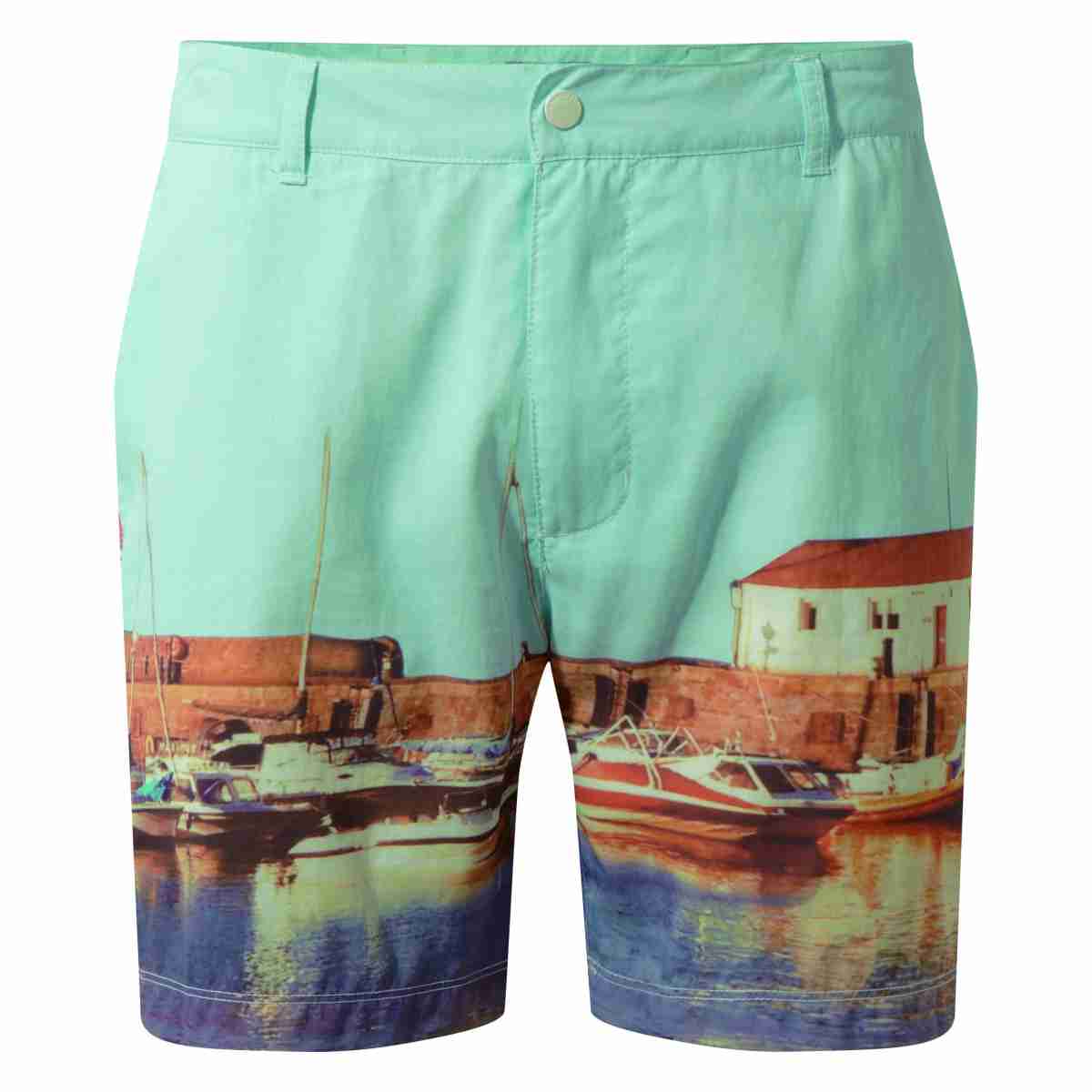
The Royal Tenenbums
While England likely doesn’t top your list of must-plan summer getaways, Craghoppers’ Northbeach shorts, photo-printed with a breezy British seascape, are fortified with SolarShield Zinc Oxide UPF 40+ protection and an anti-chlorine finish to prevent fading so you can turn up at the hotel pool on this side of the pond. $60, craghoppers.com

The Top-to-Bottoms
Versatility best describes the multi-purpose, bold-hued floral mid-thighs from Descendant of Thieves – they’re just as legit on the beach as they are in a bar – that you’ll wish your one-way boy toy would take a cue. $89, descendantofthieves.com

The Polly Wanna Partys
Fans of ABC’s Shark Tank will feel fully vested in the Caribbean-influenced parrot-print trunks from Tipsy Elves – shark Robert Herjavec made a deal in 2013 with founders Evan Mendelson and Nick Morton, providing a $100,000 investment for 10% of the company – but your pair will only set you back a couple-a Jacksons. $40, tipsyelves.com
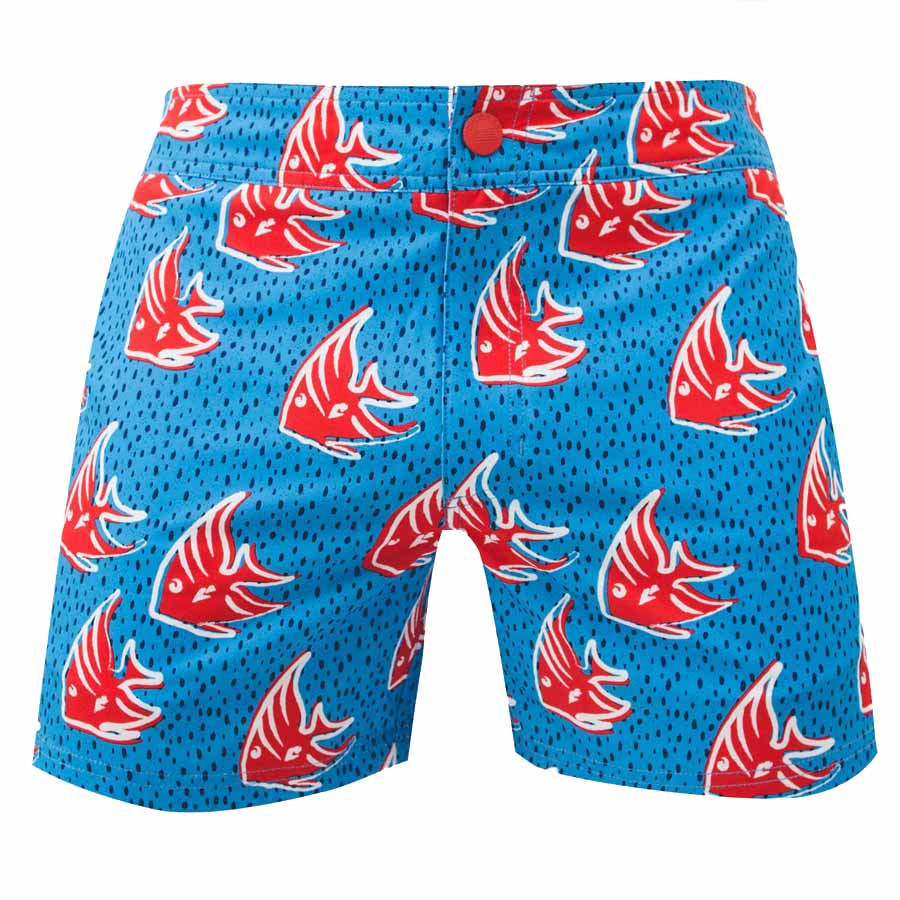
The Schools
Frat-tastic Chubbies continues its foray into snap-shut shorts – it’s ‘sky’s out, thighs out’ elastic waists have dominated its swim collection for the past few years – with a few new additions for summer ’17. Seven designs in all, from mono-colored to wild prints – like this salt-water fish style – feature four-way stretch fabric and a zipper-close back pocket for all the important documents you’ll need to take a dip. Anything can happen these days. $70, chubbiesshorts.com
The Aloha-You-Doins
Hawaii-based designer Reyn Spooner emphasizes “Mai iloko mai” – which translates to “That which is within matters” – in his island-inspired, above-the-knee board shorts constructed with four-way stretch, a drawstring tie with Velcro closure, and UPF 50 protection, available in colors like ink, smoke, and seafoam. $75-$85,
reynspooner.com

Planet Hollywood: Cher goes broadway, ex-gay conversion film, Alexander McQueen doc, gay 'Golden Girls'
- June 14, 2017 - 12:39pm
- Comments
Cher if you agree
Cher: The Musical. That’s right. It’s called Cher: The Musical. It features her songs, and it’s coming to Broadway in 2018. Give yourself a moment to stop squealing and let that sink in. The woman is getting her own Mamma Mia! and, unlike ABBA, who had to sit back and let their show be about people who are not in ABBA and, presumably, had never even heard of the existence of ABBA, this one will do its subject justice and is all about Cher’s entire life from babyhood to “Believe.” There’s been a read-through, and the creative team includes Jeffrey Seller (Hamilton) and Flody Suarez (Rise) as producers, Jason Moore (Avenue Q) directing, and Rick Elice (Jersey Boys) writing the book. Meanwhile, most importantly, the casting calls for three stages of Cher – “Babe,” “Lady” and “Star” – with supporting characters Sonny Bono, Gregg Allman, Bob Mackie, David Geffen, Robert Altman, Rob Camilletti and Sigmund Freud. And if you ask us – and someone should – we’re not going to be satisfied unless we get baby Chastity and grown-up Chaz in there, too. This cannot happen soon enough.
Joel Edgerton takes on ex-gay conversion in Boy Erased
Now that we’ve got a vice president who thinks so-called “gay conversion” therapy is a valuable form of torture for LGBT young people, the need to take it down in popular culture is more urgent than ever. Boy Erased, the 2016 memoir by Garrard Conley about his time in a fundamentalist Christian camp as a young person, is getting a big push in the direction of that national conversation: Joel Edgerton is going to direct and write the film version. Based on Conley’s time in “Love in Action,” a faith-based program meant to “cure” young people of their homosexuality, the story will reach the screen starring Lucas Hedges (Manchester by the Sea) as the tormented and, ultimately, tortured son of an Arkansas minister, with Edgerton playing the leader of the program that tries to turn the young man straight. Edgerton is also in talks with Russell Crowe and Nicole Kidman to play the boy’s parents. If production goes smoothly, it will probably mean a late 2018 theatrical bow, because it already has the meaningful subject matter movie studios love to bring out at awards time. More details on this one as they develop.
Alexander McQueen documentary delves into designer’s short life
Sometimes they come in twos. Filmmaker Andrew Haigh (Weekend, 45 Years) is at work on a narrative biopic about the sharp rise to fame and abrupt end of the life of acclaimed fashion designer Alexander McQueen (he committed suicide at age 40). And now a competing documentary feature is in the works, as well. McQueen, the working title of Ian Bonhote’s film about McQueen’s career, will take on the tough task of making sense of the creative genius’s tragic demise. The London designer began his career as a teenager before becoming a designer for Givenchy, and was known for his sensation-making, media-courting work, eventually beginning his own fashion house, one that continues even after his death. Bonhote’s film appears to be taking the usual documentary form, with the promise of plenty of access to archival footage, photographs and audio, as well as dramatic recreations and interviews with people involved in McQueen’s work and life. Bleecker Street has already purchased the North American distribution rights, so now it’s a matter of what makes it into theaters first, the doc or the drama.
Are you ready for a gay male Golden Girls?
Sometimes subtext, given enough time, turns to text. And that’s why it’s possible that the classic ’80s sitcom, Golden Girls, a show that has always been considered an analog for aging gay men and counts gay men as the bulk of its ongoing fan base, could find itself rebooted. Sort of. It turns out that writers Stan Zimmerman and James Berg, who wrote for Golden Girls, Roseanne and Gilmore Girls, as well as the 1996 film A Very Brady Sequel, saw an acclaimed documentary about LGBT senior citizens called Before You Know It. The experience prompted them to collaborate on a new sitcom pilot, called Silver Foxes. There’s already been a table read with George Takei, Leslie Jordan, Bruce Vilanch, and SNL alum Cheri Oteri. And… well, that’s all for the moment. But they want to take it all the way. And they should. Queer baby boomers are already hitting retirement age. The Gen X-ers are little more than a decade away from it themselves. These people are going to need entertainment. And given the slow process of making a TV show reality, it might take that long. We’ll be waiting.
5 Reasons Why You Need to Attend More LGBT Film Festivals
- June 14, 2017 - 12:24pm
- Comments
As someone who writes about LGBT entertainment on a regular basis (and has plenty of eye-rolls to give about the kind of content we’re putting out there; Prince Charming, anyone?), it was heartening to see recently at the OUTshine Film Festival in Miami (formerly MiFo) that the artists in charge of bringing our stories to life – whether triumphant or tragic or even mundane (our lives aren’t always disco balls and Unicorn Frappuccinos, after all) – have their fingers on the pulse of where we’re at as a community. But this and other LGBT film festivals are much more than grabbing a box of Sno-Caps and settling in for a flick about me and you. Here’s why it’s important – no, you’re duty – to attend an LGBT film festival ASAP.
1. LGBT film festivals tell our stories even if mainstream media won’t
You can count on one hand the number of LGBT films that have caught mainstream attention over the past two decades. Not films featuring LGBT characters, but rather films about LGBT characters. Ask any of your straight friends (hell, even your younger gay friends) to name an LGBT film and I’m willing to bet you get one of three movies in response: Brokeback Mountain, The Birdcage and Moonlight. The latter of the three was only released last year, and therein lies the problem: Hollywood is still afraid to bring LGBT movies to the big screen. One argument is that there’s little money to be made off LGBT movies, but that’s just not true. Great LGBT movies bring in serious cash, like Brokeback’s $178.1 million haul on a $14 million budget and Moonlight’s $55.8 million take with a super-tight $1.5 million budget.
What these three films have in common – as they do with most other LGBT films that have seen the light of day – is the internal struggle we all deal with as LGBT people. Coming out (or not coming out as is often the case) is perhaps our biggest story arc, and it’s the only one Hollywood seems willing to tell. Aside from us dying of AIDS, of course. (*eye-roll*)
This alone is a strong case for LGBT film festivals.
“LGBT film festivals ensure there is an audience for LGBT films, which otherwise may struggle to prove their value in a mainstream market, and thus never get made,” says Ebony Rhodes, an OUTshine Film Festival board member. “LGBT and allies can support the film festival by sharing and promoting the event as a relevant cultural arts partner in the larger community through all regular channels of communication. Raising awareness of LGBT film festivals also means we must support the actual filmmakers and talent by learning more about their work and supporting their careers by buying their films or supporting media platforms that feature their films, shorts or web series.”
2. They bring awareness to our issues and humanize the LGBT experience
Another reason LGBT films find it difficult to make their way into mainstream moviegoers’ consciousness is that mainstream audiences don’t “get” us. They’re not LGBT, so how can they relate, right? Obviously we know that we deal with all the same issues the rest of humanity deals with (except having to one day reveal our sexual orientation like what’s behind curtain number three on Let’s Make a Deal), but sometimes it takes strapping our family members to a movie theater recliner for two hours to get our point across. While local megaplexes are lacking options to help us hold our friends and family captive, LGBT film festivals are providing these experiences in droves. Some of the best movies I’ve ever seen – LGBT or otherwise – I saw at OUTshine last month. This is not an exaggeration. French-Canadian film 1:54, about school bullying, is not only topical but it should be required viewing for anyone under age 30. I beg you to find it (and a big box of Kleenex) and watch it with someone you love.
3. They’re a great way to meet other cultured members of the LGBT community
While LGBT film festivals celebrate our stories in theaters, they also encourage creating more stories in the real world. To that end, there are plenty of opportunities to mix and mingle with other attendees at these festivals, with post-screening discussions, cocktail parties, brunches and cultural activities around town that bring us together without having to open a single app.
4. Attendees spend their pink dollars in our communities
I spent 10 days in Miami for OUTshine (it’s a major event for the LGBT community, as are the other fests around the country) while other attendees came in and out of Magic City at their leisure to enjoy the films they most wanted to see, as well as dine, shop and relax. When I wasn’t inside a theater, I was out exploring the surroundings – and spending my gay money. I enjoyed the area’s abundance of incredible restaurants (I recommend Orange Blossom and Yardbird Southern Table & Bar), rented a Jet Ski on the ocean, popped into the Pérez Art Museum in downtown, threw back a few drinks at Sugar atop the East Hotel, hit up a vinyl store to cop an album for my record player at home, and played gay bingo at Hôtel Gaythering. Proceeds from the latter supported OUT Miami, so it was money well spent.
5. LGBT film festivals remind us we’re not alone in our individual struggles
Being LGBT can feel lonely at times, especially when we’re not represented equally in the content we consume that allows us to see ourselves and recognize that other LGBT people are going through the same things we are. That’s changing on television – GLAAD reported the highest number of LGBT characters ever on television last year – but we’re still not equitably represented in movies, or at least not in the ones that hit major theaters. So we must continue to find the content that does represent us and fully support it.
Say Rhodes, “LGBT film festivals are important because we learn to truly accept ourselves as LGBT, from having positive role models and access to validating narratives that help us process otherwise confusing, complex and often scary emotions within ourselves. The film festival provides a supportive environment to reminisce, rejoice and affirm our own identity and the fact that we are not alone.”
Remember that: You are not alone, my friends. Grab a pal. See a movie. Stay proud.
OUTshine hosts two LGBT film festivals a year: Miami in April and Ft. Lauderdale in October; it will host its first seven-day film festival cruise in Feb. 2018 aboard Celebrity Equinox. For more information, visit outshinefilm.com.
Growing Pains - The future of HIV remains hopeful
- June 14, 2017 - 9:11am
- Comments
These are uncertain times we live in. When daily messages of hopelessness and despair fill your newsfeed, there may be a temptation to shut down and tune out, or to return to old, self-destructive behaviors in an effort to cope.
If you just tested positive, you might be thinking it’s the last straw. But I need you need to know...you will be OK. You’re going to be OK.
If you’re a long-term survivor of HIV, you’ve come a long way, baby. Don’t give up now. We’ve come too far to be defeated this easily.
Lately, I’ve been reading up on something called post-traumatic growth. Research shows that many people who face trauma, adversity, or other life challenges actually report positive benefits, becoming stronger and having a more meaningful life in the wake of tragedy or a life-altering experience. We’ve seen this played out time and time again in HIV, where people turn their life around, and find meaning in their lives by helping others.
There are numerous instances of life after testing positive that are uplifting and inspiring. Take Magic Johnson, for example. He used his diagnosis to raise awareness about HIV, how it’s transmitted (and more importantly how it’s not transmitted), while providing hope to many of us living with HIV that we can still live
a full, happy and healthy life. AIDS activist the Rev. Rae Lewis-Thornton is another inspirational figure, someone who has been living with AIDS since the 1980s, yet uses her remarkable journey and life story to help inform others, especially youth, about HIV and AIDS.
HIV stigma still remains a stubborn issue, unfortunately. It’s important to understand the many layers of stigma, if we are ever truly going to put a dent in the alarming number of new infections taking place in many of our disadvantaged and disempowered communities.
So whether you just tested positive, or are a long-timer like me, I encourage you to try to take your adversity and mold it into a strength. Taking control of your life and making healthy choices, helping you to become informed about HIV treatment so that you can advocate for your own health, or the health of someone you care about, can be your first step toward a new, more meaningful life.
The HIV treatment landscape continues to evolve. For those who are newly or recently diagnosed, one pill once a day with few or no side effects is pretty much
a given these days. But it wasn’t long ago that we had to take handfuls of pills several times a day, with horrible side effects like diarrhea, bone loss, kidney stones or, worse, lots of restrictions and qualifications on when and how to dose our meds.
When all is said and done, though, the future of HIV treatment looks bright, with more effective and more tolerable medications (no more “me-too” drugs); long- acting injectables being studied for treatment and prevention; two-drug single-tablet regimens; and new co-formulations of existing medications, all on the near horizon. Drugs that attack HIV using different targets and new delivery methods could help those with resistance or who are struggling with adherence, but challenges remain. The availability of generics could alter the landscape even further, with new generic single-tablet regimens coming soon to a pharmacy near you, potentially reducing the costs of these expensive medications.
With recent reports that the overall rate of new infections are actually falling in the U.S., largely due to Treatment as Prevention (TasP, or undetectable equals uninfectious) and the rising use of daily oral PrEP for those who are HIV-negative to remain negative, the future of HIV in this country looks hopeful. Efforts to increase awareness about the benefits of testing and treatment for HIV, with no stigma attached to being aware of your status – along with the movement to rescind laws in certain states that criminalize HIV transmission, coupled with advances in HIV cure research – will keep us on track to one day eliminate HIV once and for all.



